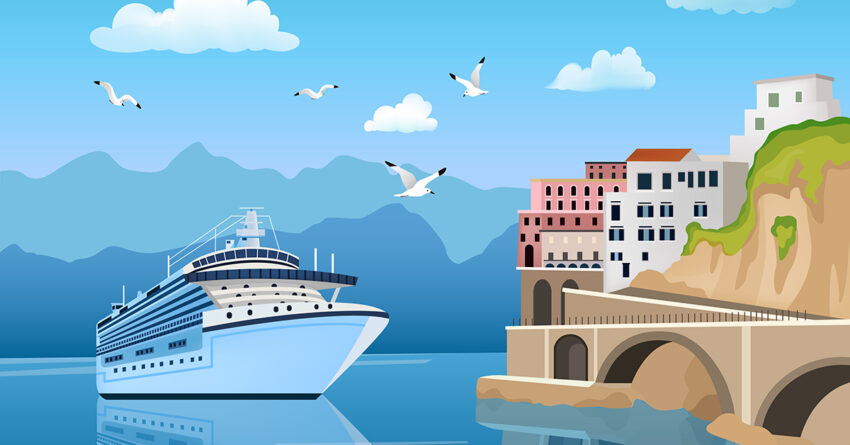I thought it would be interesting to see how some destinations and cruise lines have changed since 2021. The pandemic has been the worst period for the cruise industry since World War II. While the number of cruises is rebounding sharply, some destinations are facing a cloudy future as cruise destinations and many cruise lines are contending with daunting debt in ways that may affect how they treat their guests.
At the same time, there are some winners on which travel advisors can focus, if they want to benefit clients and themselves, as well as some question marks that can go either way.

DESTINATIONS – Probable Losers
The greatest loser is Russia. Cruises to St. Petersburg and Siberia have been virtually eliminated and may not recover for generations. Ditto for China if they continue to threaten Taiwan. How many westerners will keep Hong Kong or Shanghai on their bucket lists if they think war is imminent?
The other destination that may be a loser is Mexico—particularly on the West Coast, where street and gang violence has caused some cruise lines to curtail their port visits. It was the same a decade earlier when some Mexican port visits on a cruise my wife and I were on sailed about 1 pm to ensure the safety of those taking shore excursions.
DESTINATIONS – Pretty Sure Bets Right Now
Many winning destinations are relatively unpopulated, with sufficient infrastructure to dock and supply several ships during their cruising season. Iceland, Canada, Alaska, Scotland, Ireland, and Norway are already booming; Japan, Australia, and New Zealand will probably follow when they decide that the pandemic is truly over.
All the boomers are First-World nations with relatively few political problems, outstanding health care, and many things to see and do. They also enjoy a higher personal safety than in the mainland US. Except for western Alaska, they are far from Ukraine and the Soviet Union, and none require mastery in languages other than English for cruisers to fully enjoy port visits.
The nations of Western Europe—especially Italy, France, Spain, Portugal, Holland, Denmark, Germany, Sweden, and Greece—also score very high on this checklist. These nations, with Vietnam and Thailand, are also pretty sure bets right now. Other hot nations are close to Antarctica, namely Argentina and Chile, that most committed cruisers want to visit before they get too old to travel on a Zodiac to photograph elephant seals and penguins on the shores of Antarctica. On the same voyages, they can learn to tango in Buenos Aires and sample fine wines in Santiago, not far from the vineyards from which they emerged.
SHIPS – Probable Losers
Many mass-market resort ships may be caught between the pressure to sail with a full complement of thousands of guests and not resorting to sharp discounting, which they can no longer afford.
They will also face resistance to selling their inside cabins to cruise advisors and guests who no longer consider them safe. They may also encounter resistance from many new popular destinations for unloading thousands of guests and crew members in small, beautiful ports.
These pressures may cause some of them to be refitted as smaller, more luxurious ships with improved deck plans that will permit many more verandas and other health-oriented changes, such as better ventilated crew quarters and public areas. At least one European line seems to be already heading down this path.
SHIPS – Pretty Sure Bets Right Now
The hottest category seems to be “luxury expedition ships,” such as those operated by Ponant, Scenic, Silversea, and Seabourn. They can enter little harbors and cruise anywhere in the world, thanks to their icebreaker-rated hulls. They also raise the bar of luxury cruising with a nearly 1:1 ratio of guests-to-crew. Some are equipped with helicopters and small submarines for their guests to use.
These ships are increasing the cost of cruising above $1,000 per guest daily, but there is little price resistance described in the travel press. Most of these ships carry less than 400 passengers, the limit for vessels permitted to have guests go ashore in Antarctic waters. Look for many of these ships to offer charters to bring guests from European and US gateway cities to the destination from where these cruises start and end. This should make these cruises a seamless luxury experience from end to end.
The traditional small ships with 400-1200 pax fall right below this luxury expedition ship category. Surprisingly, this seems to be dominated by a new brand—Viking Ocean—which appears to be launching a new vessel every few months. These 900-guest ships cost about $500-700 per day for most staterooms and suites. Their main competition comes from the Big Three luxury brands: Regent, Seabourn, and Silversea—and less expensive ships in the same size range, such as Oceania and Azamara, that many veteran cruisers swear by.
An interesting twist is that some of these ships, especially those in the upper-price echelons such as Regent, differentiate themselves mainly by offering “free” extras such as business class airfare and unlimited shore excursions—but provide roughly the same-size staterooms and guest-to-crew ratios as their competitors. This makes price comparison between the brands in this category somewhat perilous, unless travel advisors’ factor in the cost of these extras and how valuable they are to individual guests.
Look for some luxury brands in both categories to be sold off to luxury-product-oriented private syndicates and sovereign wealth funds to help pay off the debts of their parent companies. The contrast between these ships and the resort ships that are more than 5-10 times their size is now greater than ever. Look for some brands that had their roots in riverboats and popular brands to move upscale in their pre-sales services to clients, so that they have a greater resemblance to the traditional luxury brands.

Dr. Steve Frankel and his wife have cruised on most of the Seabourn, Silversea, Crystal, Azamara, Oceania, Regent, and Windstar ships. Steve is the founder of Cruises & Cameras Travel Services, LLC. He has been recognized as a “2021 Top Travel Specialist” by Conde Nast Traveler magazine and a “Travel Expert Select “by the Signature Travel Network. His specialties are luxury small-ship cruises and COVID-19 safety measures, and has a doctorate in Educational Research with minors in Marketing and Quantitative Business Analysis. He’s also earned a Certificate in Epidemiology from Johns Hopkins University. Previously, he managed qualitative and quantitative research in the private & public sectors. He’s a member of the Los Angeles Press Club, and has written 13 books and hundreds of articles. His email address is steve@cruisesandcameras.com.



